The cable chest exercise is a versatile strength training exercise that targets the muscles of the chest.
It involves using a cable machine equipped with adjustable pulleys and handles.
Proper form and technique are crucial for maximizing the effectiveness of the exercise.
Body positioning, grip variations, and range of motion play key roles in achieving optimal results.
By targeting different muscle groups within the chest, such as the upper, middle, and lower chest, you can achieve balanced muscle development.
Progression and variation are essential for continuous gains and preventing plateaus.
Nutrition and hydration are important factors for supporting muscle growth and recovery.
Whether you’re a beginner or advanced lifter, the cable chest exercise can be tailored to suit your fitness level and goals.
Incorporating this exercise into your workout routine can lead to improved strength, muscle tone, and overall fitness.
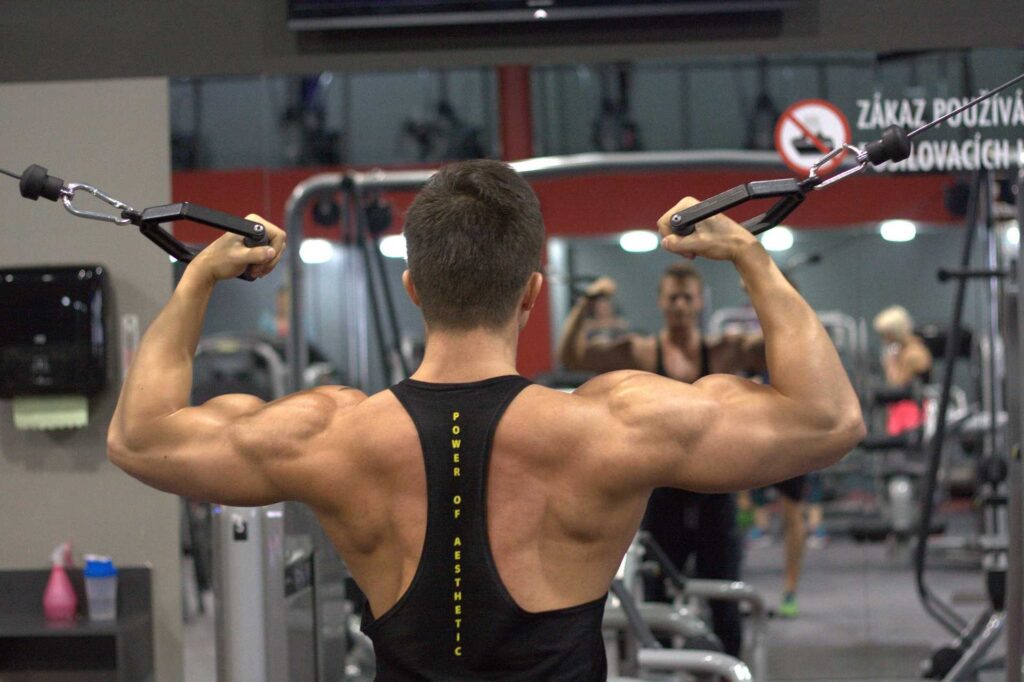
Introduction:
Welcome to our ultimate guide on mastering the cable chest exercise! Whether you’re a beginner looking to kickstart your fitness journey or a seasoned gym-goer wanting to refine your technique, this article is designed to provide you with everything you need to know about this effective exercise
- Understanding the Basics
- Proper Form and Technique
- Targeting Different Muscle Groups
- Common Mistakes to Avoid
- Progression and Variation
- Sample Cable Chest Workout Routine
- Benefits of the Cable Chest Exercise
- Nutrition Tips for Muscle Growth
- FAQs of cable chest exercise
- Conclusion of cable chest exercise
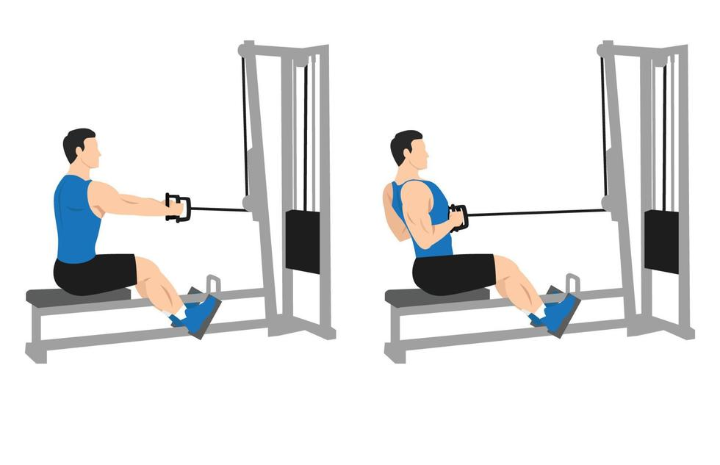
1 Understanding the Basics:
What is the cable chest exercise?
The cable chest exercise, also known as the cable chest press or cable fly, is a strength training exercise that targets the muscles of the chest, including the pectoralis major and minor. It involves using a cable machine equipped with adjustable pulleys, handles, and a weight stack to provide resistance.
Why is it beneficial for your chest muscles?
The cable chest exercise offers several benefits for chest muscle development:
- Muscle Isolation: Unlike traditional free weight exercises, the cable machine provides constant tension throughout the movement, leading to better muscle isolation and activation.
- Range of Motion: The adjustable pulleys allow for a wide range of motion, enabling you to target different areas of the chest effectively.
- Versatility: The cable machine offers various attachment options and grip variations, allowing you to perform a wide range of chest exercises to target different muscle groups.
- Stability: The cable machine provides stability and support, reducing the risk of injury and allowing you to focus solely on the chest muscles without worrying about balancing free weights.
Equipment needed:
To perform the cable chest exercise, you’ll need access to a cable machine equipped with:
- Adjustable pulleys: These allow you to change the height and angle of the cables to target different areas of the chest.
- Handles: Most cable machines come with different handle attachments, including straight bars, D-bars, and rope handles, providing options for various grip positions.
- Weight stack: The weight stack provides the resistance for the exercise, allowing you to adjust the weight to match your strength and fitness level.
By understanding the basics of the cable chest exercise, including its benefits and the equipment needed, you’ll be well-equipped to incorporate this effective exercise into your workout routine and start seeing results in your chest development.

2 Proper Form and Technique:
Body positioning: Proper body positioning is crucial for maximizing the effectiveness of the cable chest exercise and reducing the risk of injury. Follow these guidelines:
- Stand with your feet shoulder-width apart for stability.
- Maintain a slight bend in your knees to avoid locking them.
- Engage your core muscles by bracing your abdominals throughout the exercise.
- Keep your chest up and your shoulders back and down to maintain good posture.
- Avoid overarching your lower back or leaning too far forward or backward, as this can strain your spine.
Grip variations: The cable chest exercise offers various grip options, each targeting the chest muscles from different angles. Experiment with different grips to find the ones that work best for you:
- Overhand grip: Grip the handles with your palms facing down. This grip primarily targets the outer chest muscles.
- Underhand grip: Grip the handles with your palms facing up. This grip emphasizes the inner chest muscles and may also engage the biceps to a greater extent.
- Neutral grip: Grip the handles with your palms facing each other. This grip provides a balance between targeting the outer and inner chest muscles.
Range of motion: Focus on achieving a full range of motion to fully engage the chest muscles and maximize muscle activation. Follow these guidelines:
- Start with the handles at chest height or slightly below.
- As you extend your arms forward, maintain a slight bend in your elbows to avoid locking them.
- Bring the handles together in front of your chest, squeezing your chest muscles at the peak of the movement.
- Control the weight as you return to the starting position, feeling a stretch in your chest muscles.
Breathing technique: Proper breathing technique helps stabilize your core and maintain control throughout the exercise. Follow these breathing cues:
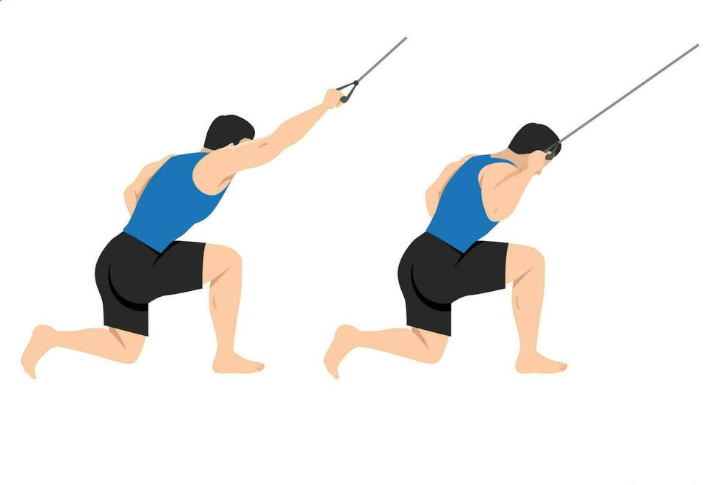
- Inhale as you lower the handles, allowing your chest to expand.
- Exhale as you push the handles away from your body, engaging your core muscles and exerting force against the resistance.
- Avoid holding your breath, as this can increase intra-abdominal pressure and reduce stability.
By mastering proper form and technique, including body positioning, grip variations, range of motion, and breathing cues, you’ll optimize your performance and maximize the effectiveness of the cable chest exercise. Remember to start with lighter weights and gradually increase the resistance as you become more comfortable with the exercise.

3 Targeting Different Muscle Groups:
The cable chest exercise offers versatility in targeting various muscle groups within the chest, including the upper, middle, and lower chest, as well as the inner and outer chest muscles. Here’s how to effectively target each muscle group:
Upper chest:
To target the upper chest muscles (pectoralis major), incorporate incline cable chest press variations into your workout routine:
- Adjust the cable pulleys to a high position above your head.
- Sit or stand on an incline bench set to a 30-45 degree angle.
- Grip the handles with an overhand grip.
- Press the handles upward and slightly inward, focusing on squeezing the upper chest muscles at the top of the movement.
- Control the weight as you return to the starting position, feeling a stretch in your chest muscles.
Middle chest:
The middle chest muscles can be effectively targeted with flat cable chest press variations:
- Position the cable pulleys at chest height.
- Stand or sit on a flat bench.
- Grip the handles with an overhand or neutral grip.
- Press the handles forward and slightly downward, focusing on squeezing the middle chest muscles as you bring the handles together.
- Maintain control as you return to the starting position, keeping tension on the chest muscles throughout the movement.
Lower chest:
To target the lower chest muscles (lower portion of the pectoralis major), incorporate decline cable chest press variations:
- Position the cable pulleys at a low position near the floor.
- Lie on a decline bench with your head lower than your hips.
- Grip the handles with an overhand or neutral grip.
- Press the handles upward and slightly outward, focusing on squeezing the lower chest muscles as you bring the handles together.
- Control the weight as you return to the starting position, maintaining tension on the chest muscles.
Fly variations:
In addition to chest press variations, cable fly exercises can be used to isolate and stretch the chest muscles:
- Adjust the cable pulleys to chest height.
- Stand with one foot forward for stability.
- Grip the handles with an overhand or neutral grip.
- Keeping a slight bend in your elbows, bring the handles together in front of your chest, focusing on squeezing the chest muscles.
- Control the weight as you return to the starting position, feeling a stretch in the chest muscles.
By incorporating these cable chest exercises into your workout routine and targeting different muscle groups within the chest, you’ll achieve balanced chest development and maximize your strength and muscle gains.

4. Common Mistakes to Avoid:
While the cable chest exercise is highly effective for building chest strength and muscle size, certain common mistakes can hinder your progress and increase the risk of injury. Here are some key mistakes to avoid:
Using too much weight:
One of the most common mistakes people make is using too much weight, which can compromise form and lead to improper muscle activation. Start with a lighter weight that allows you to maintain proper form and gradually increase the resistance as you become stronger.
Allowing momentum to take over:
Many people rely on momentum rather than muscle control to perform the cable chest exercise, swinging the handles back and forth rather than engaging the chest muscles. Focus on controlling the weight throughout the entire range of motion, moving deliberately and with intention.
Incorrect body alignment:
Poor body alignment, such as arching the lower back or rounding the shoulders, can put unnecessary strain on the spine and reduce the effectiveness of the exercise. Maintain a neutral spine, with your chest up, shoulders back and down, and core engaged throughout the movement.
Not fully engaging the chest muscles:
It’s important to consciously focus on contracting and engaging the chest muscles throughout the exercise. Visualize squeezing the chest muscles as you bring the handles together, and focus on maintaining tension in the chest muscles throughout the movement.
To avoid these common mistakes, focus on using proper form and technique, start with lighter weights, and prioritize muscle engagement over lifting heavy weights. By performing the cable chest exercise with correct form and control, you’ll maximize your results and minimize the risk of injury.

5. Progression and Variation:
Progression and variation are key components of any successful workout program, including the cable chest exercise. By progressively increasing the intensity and incorporating different variations, you can challenge your muscles in new ways and continue making gains over time. Here’s how to effectively progress and vary your cable chest exercises:
Increasing weight gradually:
Progressive overload is essential for muscle growth and strength development. As you become stronger and more proficient with the cable chest exercise, gradually increase the weight resistance to continue challenging your muscles. Aim to increase the weight by small increments (e.g., 2.5-5 pounds) as you reach the upper end of your rep range with proper form.
Adjusting the cable height:
Changing the height of the cable pulleys can alter the angle of resistance and target different areas of the chest. Experiment with different cable heights to find the angles that best activate your chest muscles. For example, setting the pulleys higher can emphasize the upper chest, while setting them lower can target the lower chest.
Incorporating supersets and drop sets:
Supersets and drop sets are advanced training techniques that can help increase muscle fatigue and stimulate muscle growth. Try incorporating supersets by pairing the cable chest exercise with another chest exercise or a complementary muscle group exercise, such as back or shoulders. Drop sets involve performing multiple sets of the cable chest exercise with decreasing weight and minimal rest in between sets to push your muscles to fatigue.
Exploring different angles and grips:
Variety is key to preventing plateaus and continuously challenging your muscles. Experiment with different angles and grips to target various areas of the chest and engage different muscle fibers. For example, incline cable chest presses target the upper chest, while decline cable chest presses target the lower chest. Similarly, changing your grip from overhand to underhand or neutral can shift the emphasis between the inner and outer chest muscles.
By incorporating progressive overload, adjusting cable height, incorporating supersets and drop sets, and exploring different angles and grips, you can effectively progress and vary your cable chest exercises to continue making gains and achieving your fitness goals.
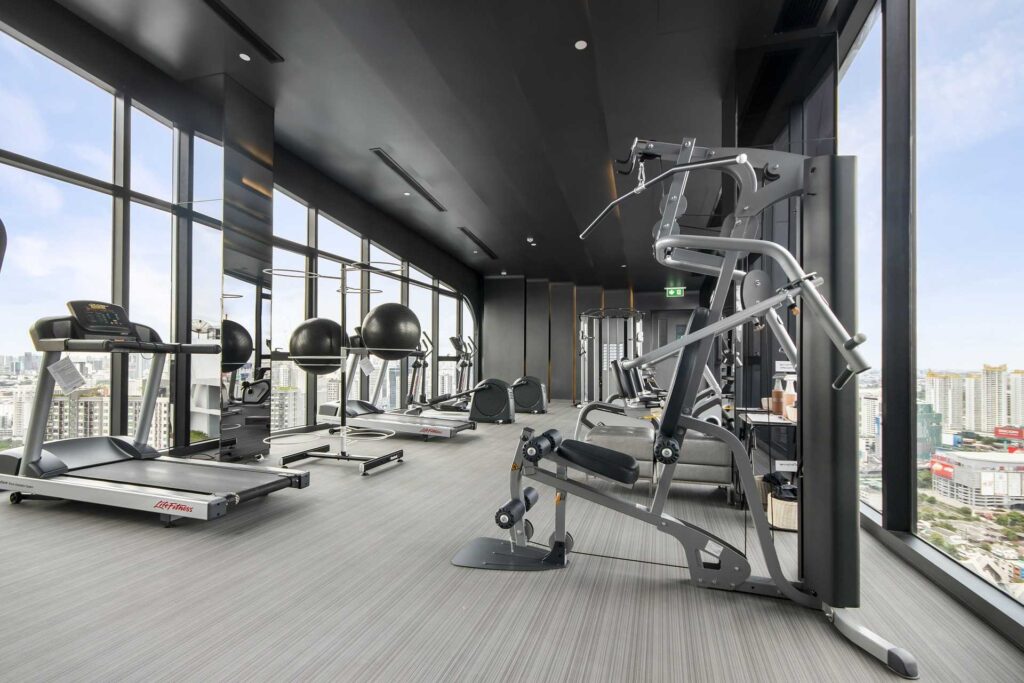
6. Sample Cable Chest Workout Routine:
A well-structured workout routine is essential for maximizing the benefits of the cable chest exercise and achieving your fitness goals. Here’s a sample cable chest workout routine that you can incorporate into your training regimen:
Warm-up:
Before starting your workout, it’s crucial to warm up your muscles and prepare your body for exercise. Spend 5-10 minutes performing dynamic stretches and mobility exercises to increase blood flow to the muscles and improve range of motion. Some effective warm-up exercises for the chest include arm circles, shoulder rolls, and chest openers.
Main Workout:
Perform 3-4 sets of each exercise with a rep range of 8-12 reps, resting for 60-90 seconds between sets. Adjust the weight to challenge yourself while maintaining proper form.
- Incline Cable Chest Press:
- Adjust the cable pulleys to a high position above your head.
- Set an incline bench to a 30-45 degree angle.
- Grip the handles with an overhand grip.
- Press the handles upward and slightly inward, focusing on squeezing the upper chest muscles at the top of the movement.
- Lower the handles back to the starting position with control.
- Repeat for the desired number of reps.
- Flat Cable Chest Press:
- Position the cable pulleys at chest height.
- Sit or stand on a flat bench.
- Grip the handles with an overhand or neutral grip.
- Press the handles forward and slightly downward, focusing on squeezing the middle chest muscles as you bring the handles together.
- Return to the starting position under control.
- Complete the desired number of reps.
- Cable Fly:
- Adjust the cable pulleys to chest height.
- Stand with one foot forward for stability.
- Grip the handles with an overhand or neutral grip.
- Keeping a slight bend in your elbows, bring the handles together in front of your chest, focusing on squeezing the chest muscles.
- Control the weight as you return to the starting position, feeling a stretch in the chest muscles.
- Repeat for the desired number of reps.
Cool-down:
After completing your workout, take 5-10 minutes to cool down and stretch your chest muscles. Perform static stretches such as chest stretches, doorway stretches, and shoulder stretches to help improve flexibility and prevent muscle tightness.
By following this sample cable chest workout routine, you’ll effectively target all areas of your chest muscles and stimulate muscle growth and strength development. Remember to listen to your body, adjust the weight and intensity as needed, and prioritize proper form throughout your workout.
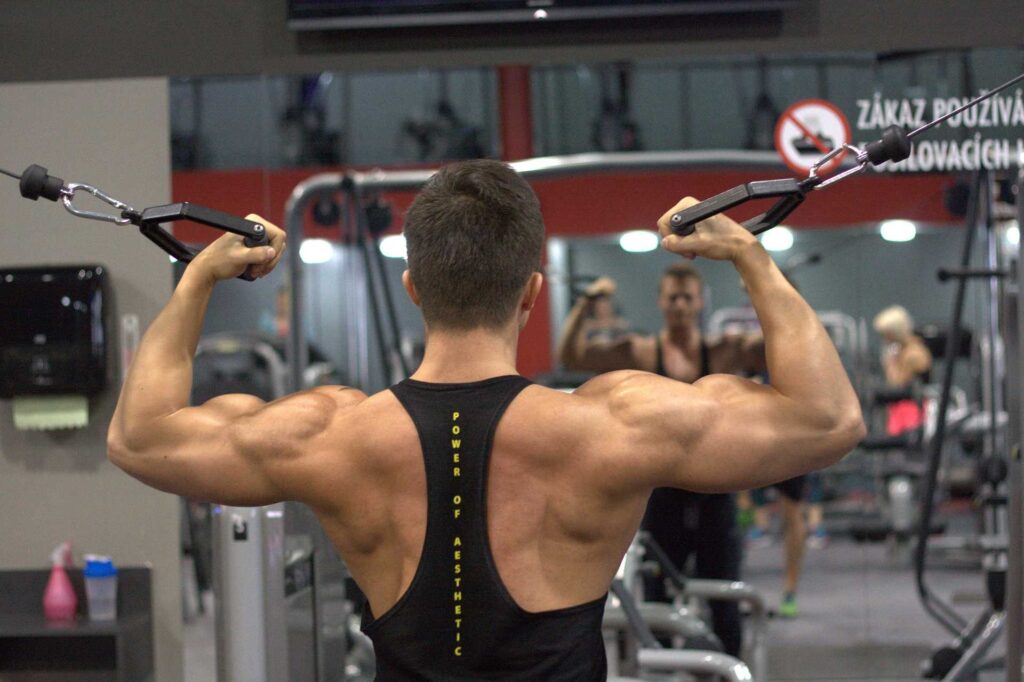
7. Benefits of the Cable Chest Exercise:
The cable chest exercise offers a multitude of benefits for individuals of all fitness levels, from beginners to advanced athletes. Understanding these benefits can help you appreciate the value of incorporating the cable chest exercise into your workout routine. Here are some key advantages:
Improved muscle isolation and activation:
Unlike traditional free weight exercises, the cable chest exercise provides constant tension throughout the entire range of motion. This constant tension helps to isolate and activate the chest muscles more effectively, leading to greater muscle recruitment and growth over time.
Balanced strength development:
The cable chest exercise allows for a wide range of motion and angle variations, enabling you to target different areas of the chest, including the upper, middle, and lower chest. By incorporating these variations into your workout routine, you can achieve balanced strength development across all regions of the chest muscles.
Versatility for various fitness levels:
The cable machine offers adjustable weight resistance, making it suitable for individuals of all fitness levels, from beginners to advanced lifters. Whether you’re just starting out or have been training for years, you can adjust the weight to match your strength and fitness level, allowing for continuous progression and improvement over time.
Reduced risk of injury compared to free weights:
The cable machine provides stability and support throughout the exercise, reducing the risk of injury compared to using free weights, especially for beginners who may struggle with balance and coordination. Additionally, the adjustable pulleys allow for smoother, more controlled movements, minimizing the risk of strain or overexertion.
By incorporating the cable chest exercise into your workout routine, you can enjoy these benefits and more, including improved muscle strength, endurance, and aesthetics. Whether your goal is to build a bigger chest, improve functional strength, or enhance athletic performance, the cable chest exercise can be a valuable addition to your fitness regimen.
8. Nutrition Tips for Muscle Growth:
In addition to incorporating the cable chest exercise into your workout routine, proper nutrition is essential for supporting muscle growth, recovery, and overall fitness progress. Here are some key nutrition tips to help you maximize your muscle gains:
Protein-rich foods for muscle repair and recovery:
Protein is the building block of muscle tissue and is essential for muscle repair and recovery after exercise. Include high-quality protein sources in your diet, such as lean meats, poultry, fish, eggs, dairy products, tofu, tempeh, legumes, and protein supplements like whey protein powder. Aim to consume protein-rich foods with each meal and snack to support muscle growth and repair.
Carbohydrates for energy:
Carbohydrates are the body’s primary source of energy, especially during intense workouts and strength training sessions. Include complex carbohydrates in your diet, such as whole grains, fruits, vegetables, and legumes, to provide sustained energy for your workouts and support glycogen replenishment in your muscles. Prioritize whole, nutrient-dense carbohydrates over refined and processed options for optimal energy and performance.
Healthy fats for hormone production:
Healthy fats are essential for hormone production, including testosterone, which plays a key role in muscle growth and development. Include sources of healthy fats in your diet, such as avocados, nuts, seeds, olive oil, coconut oil, fatty fish, and flaxseeds. Aim to incorporate a variety of healthy fats into your meals and snacks to support overall health and hormonal balance.

Hydration importance:
Hydration is critical for optimal performance and recovery, especially during intense exercise and strength training sessions. Drink plenty of water throughout the day to stay hydrated and support muscle function, nutrient delivery, and waste removal. Aim to drink at least 8-10 cups of water per day, and consider consuming additional fluids before, during, and after your workouts to replace lost fluids and electrolytes.
In addition to these nutrition tips, it’s important to prioritize overall dietary balance, variety, and moderation. Focus on consuming a balanced diet rich in whole, nutrient-dense foods, including lean proteins, complex carbohydrates, healthy fats, fruits, vegetables, and plenty of water. By fueling your body with the right nutrients and staying properly hydrated, you’ll support muscle growth, recovery, and overall fitness progress.
9. FAQS of cable chest exercise
As you embark on your journey to master the cable chest exercise, you may have some questions about its effectiveness, safety, and practicality. Here are some frequently asked questions (FAQs) to help address any concerns you may have:
Can women benefit from the cable chest exercise?
Yes, absolutely! The cable chest exercise is beneficial for both men and women, as it targets the chest muscles (pectoralis major and minor) and can help improve muscle tone, strength, and definition. Women can incorporate the cable chest exercise into their workout routine to sculpt and strengthen their chest muscles, enhance upper body strength, and achieve a balanced physique.
How often should the cable chest exercise be performed?
The frequency of performing the cable chest exercise can vary depending on your fitness goals, training experience, and overall workout routine. As a general guideline, aim to include the cable chest exercise in your workout routine 1-3 times per week, with at least one day of rest between sessions to allow for muscle recovery and growth. Listen to your body and adjust the frequency based on your individual needs and recovery capacity.
Can it be done at home without a cable machine?
While the cable chest exercise is traditionally performed using a cable machine with adjustable pulleys and weight resistance, there are alternative exercises that can target the chest muscles effectively without equipment. Bodyweight exercises such as push-ups, chest dips, and chest presses can be performed at home with minimal equipment or using household items like resistance bands or dumbbells. Additionally, some gyms offer alternative machines or equipment that mimic the motion of cable exercises.
Is the cable chest exercise safe for beginners?
When performed with proper form and technique, the cable chest exercise is generally safe for beginners. However, it’s important to start with lighter weights and focus on mastering the movement pattern before progressing to heavier resistance. Beginners should also pay attention to their body positioning, grip variations, and breathing technique to ensure proper muscle engagement and minimize the risk of injury. If you’re unsure about how to perform the exercise correctly, consider seeking guidance from a qualified fitness professional.
By addressing these common questions, you’ll gain a better understanding of the cable chest exercise and how it can be incorporated into your fitness routine to achieve your goals safely and effectively.
10 Conclusions of cable chest exercise
Congratulations! You’ve now become well-versed in the cable chest exercise, equipped with the knowledge and skills to incorporate this effective exercise into your workout routine and achieve your fitness goals. Let’s recap some key takeaways from our comprehensive guide:
Consistency is key: Incorporate the cable chest exercise into your workout routine regularly to see progress and improvements in muscle strength, size, and definition. Aim to perform the exercise 1-3 times per week, with proper rest and recovery between sessions.
Focus on proper form and technique: Pay attention to your body positioning, grip variations, range of motion, and breathing technique to ensure proper muscle engagement and minimize the risk of injury. Start with lighter weights and gradually increase the resistance as you become more proficient with the exercise.
Target different muscle groups: Experiment with different cable chest exercise variations, angles, and grips to effectively target various areas of the chest, including the upper, middle, and lower chest muscles. Incorporate incline, flat, and decline chest presses, as well as cable fly variations, to achieve balanced chest development.
Progress and vary your workouts: Continuously challenge your muscles by increasing weight gradually, adjusting cable height, incorporating supersets and drop sets, and exploring different angles and grips. This will help prevent plateaus and keep your workouts challenging and effective.
Prioritize nutrition and hydration: Support your muscle growth, recovery, and overall fitness progress by maintaining a balanced diet rich in protein, carbohydrates, healthy fats, fruits, vegetables, and plenty of water. Proper nutrition and hydration are essential for optimal performance and results.
Whether your goal is to build a bigger chest, improve strength and muscle tone, or enhance overall fitness and athletic performance, the cable chest exercise can be a valuable addition to your workout arsenal. By following the guidelines outlined in this guide and staying consistent with your training and nutrition, you’ll be well on your way to achieving your fitness goals and sculpting the chest muscles of your dreams.
So grab those handles, adjust the weight, and let’s get started on sculpting those chest muscles to perfection! Remember, the journey to a stronger, more defined chest begins with a single rep. Keep pushing yourself, stay dedicated, and enjoy the rewards of your hard work and dedication.
Here’s to your success and to unlocking your full potential with the cable chest exercise!
By incorporating these tips and techniques into your workout routine, you’ll be on your way to a stronger, more defined chest in no time.
Happy lifting!
| How Health Fitness Measured ? |
